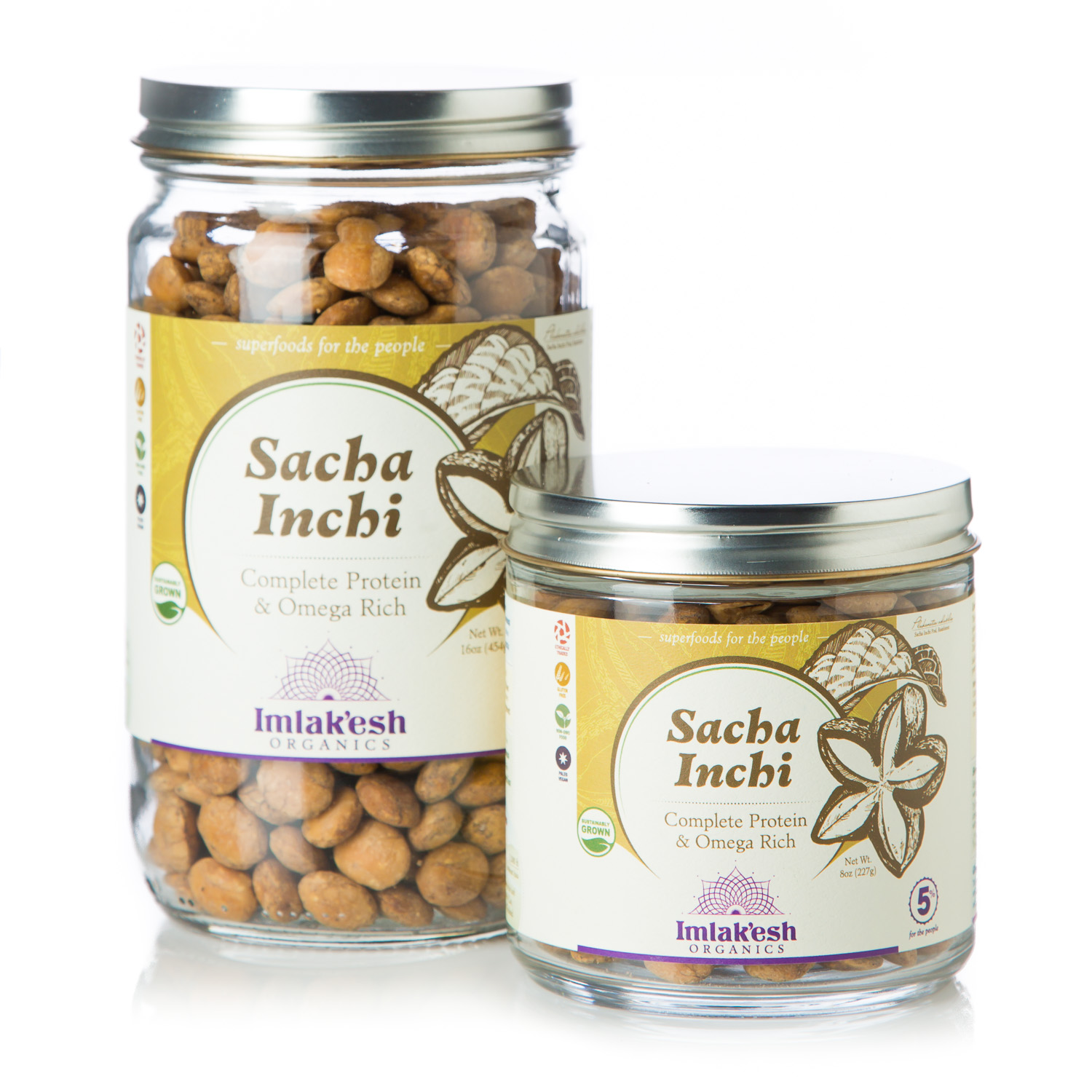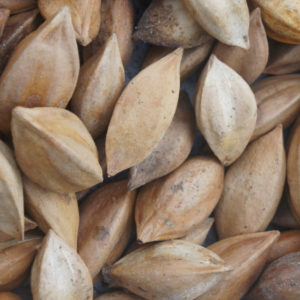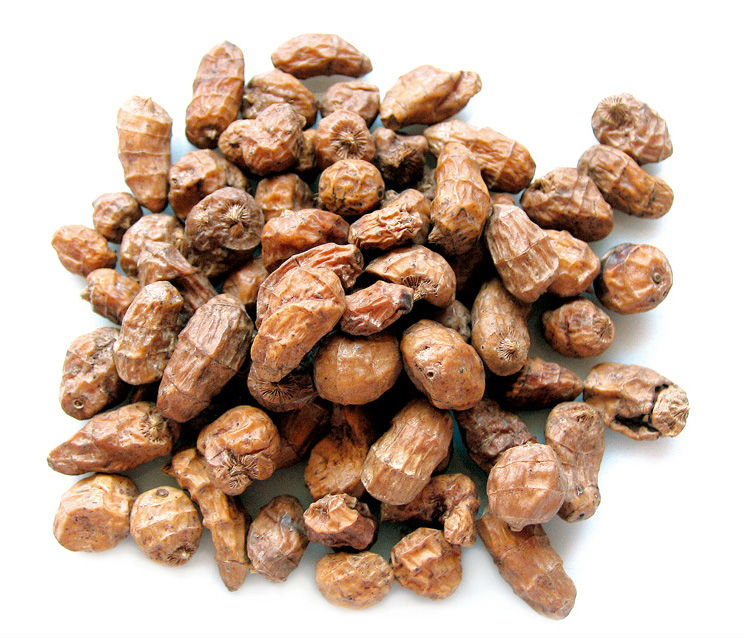 Nuts and seeds in moderation can be a boon to the nutrient-focused diet. They are rich in antioxidant vitamins, essential minerals including being a major dietary source of magnesium, dietary fiber, L-arginine, and some nuts contain high levels of heart-healthy monounsaturated fats and the omega-3 fatty acid alpha-linolenic acid.
Nuts and seeds in moderation can be a boon to the nutrient-focused diet. They are rich in antioxidant vitamins, essential minerals including being a major dietary source of magnesium, dietary fiber, L-arginine, and some nuts contain high levels of heart-healthy monounsaturated fats and the omega-3 fatty acid alpha-linolenic acid.
Table of Contents[Hide][Show]
A mere 20 grams of nuts per day is associated with substantially reduced risk (think 20-70%) of cardiovascular disease, cancer, neurodegenertative disease, kidney disease, diabetes, infections, and mortality from respiratory disease. That’s because nut consumption decreases markers of inflammation, including CRP, IL-6, TNF-α, and IL-18. There’s also emerging evidence of beneficial effects on oxidative stress, vascular reactivity, and hypertension. Numerous studies show that people who regularly eat nuts tend to have more favorable blood lipid profiles, and one meta-analysis of 25 clinical studies showed that nut consumption had a dose-response cholesterol-lowering effect. Interventional studies consistently show that increasing nut intake has a cholesterol-lowering effect, even in the context of healthy diets. Plenty of research suggests that, despite their energy density, nuts and seeds don’t contribute to weight gain, and they may even protect against obesity and diabetes. Even three 1-ounce servings per week can lower all-cause mortality risk (a measure of overall health and longevity) by a whopping 39%, meaning that not only can eating nuts on a regular basis improve health but they can potentially extend lifespan too. For more, see Nuts and the Paleo Diet: Moderation is Key.
For those of us who tolerate them well, these tiny, nutrient-dense foods make a particularly portable (and tasty!) addition to our purse, plate or meal plan. Let’s face it, though: our usual rotation of almonds, walnuts and macadamias can get a little repetitive. And boredom isn’t the only reason why we should try to mix it up: different nuts contain different vitamins, minerals, phytochemicals and fats. So, adding some new nuts and seeds to our rotation is a great way to boost the overall nutrient-density of our diets. Maybe even more compelling, there are some lesser known nuts and seeds that pack a way bigger nutrient punch than many of our staples! Read on to learn about three amazing options!
Nut allergy? Don’t worry, I’ve got you covered! In fact, two of the three choices below aren’t technically nuts at all. And one is even AIP-friendly! Of course, they can all be used in much the same way, all pack some compelling nutrition, and are super tasty!
Sacha Inchi
Sacha inchi (Plukenetia volubilis, also known as the sacha peanut, mountain peanut, or Inca-peanut) is an incredible seed native to South America and the Caribbean. Don’t let their alias fool you: sacha inchi seeds are the seed of edible fruit that grows on a tropical vine, not a tree nut or a legume. While they’re just now reaching the American market, sacha inchi seeds have been consumed by indigenous people of the Amazon Rainforest for many centuries, making them a wonderful addition to a Paleo lifestyle. I’ve recently started enjoying sacha inchi myself, and when I say enjoying, I mean I’m LOVING them. I’ve given them an honor only a few snacks get: I’ve been hiding them on my desk so my husband and daughters won’t eat them all! LOL!
Sacha inchi are chock-full of nutrition! They are good sources of vitamin A (carotenoids), vitamin E, and several minerals, including calcium, iodine and iron. Sacha inchi seeds are very rich in protein (8.5g per serving), fiber (5g per serving), and essential fatty acids. Interestingly, these nutrient-dense seeds are particularly rich in the omega-3 fatty acid alpha-linolenic acid (ALA), providing 350% of the recommended daily value of ALA in each serving!
One key to a health-promoting diet is to consume plenty of omega-3 fatty acids and aim for between a 1:1 and a 3:1 ratio of omega-6s to omega-3s. Generally, the plant form of omega-3s, ALA, must be converted into the longer, active forms DHA and EPA to be used by our bodies (although there are some processes that use ALA). Unfortunately, conversion is typically inefficient, approximately 6% for EPA and 3.8% for DHA, which is why, most of the time, it’s important to get our omega-3s from animal sources like fish. Study after study shows that increasing consumption of DHA and EPA reduces disease severity and symptoms—for instance, it makes the symptoms of rheumatoid arthritis better—and lowers risk of developing certain diseases, such as cardiovascular disease. But, here’s where sacha inchi seeds stand out! There is scientific evidence that, thanks to the synergistic presence of other nutrients and the unusually high concentration of ALA (highest of all plant sources!), consuming sacha inchi seeds increases bioavailable ALA in all tissues, with a subsequent increase in DHA in the liver and brain with an increase in EPA in red blood cells, liver, kidney, small intestine, and heart! Woot!  The net effect is a decrease in systemic inflammation, which is the cornerstone of disease prevention. So, seafood is still a phenomenal nutrient-dense contribution to a healthy diet, we can feel really good about the ALA coming from sacha inchi!!
The net effect is a decrease in systemic inflammation, which is the cornerstone of disease prevention. So, seafood is still a phenomenal nutrient-dense contribution to a healthy diet, we can feel really good about the ALA coming from sacha inchi!!
Pili Nuts
 Pili nuts (Canarium ovatum) are a buttery, rich nut that make a fabulous alternative to softer nuts like cashews and walnuts. Pili are native to Southeast Asia, Papua New Guinea, and Australia, and they have also been historically consumed by indigenous people! While I don’t totally support the idea of evolutionary biology as reasoning for consuming a particular food (see The Diet We’re Meant To Eat, Part 1: Evolution & Hunter-Gatherers), I love knowing a food’s history and understanding how it was traditionally prepared. I do think there’s quite a bit of wisdom in the diets our ancestors intuitively ate!
Pili nuts (Canarium ovatum) are a buttery, rich nut that make a fabulous alternative to softer nuts like cashews and walnuts. Pili are native to Southeast Asia, Papua New Guinea, and Australia, and they have also been historically consumed by indigenous people! While I don’t totally support the idea of evolutionary biology as reasoning for consuming a particular food (see The Diet We’re Meant To Eat, Part 1: Evolution & Hunter-Gatherers), I love knowing a food’s history and understanding how it was traditionally prepared. I do think there’s quite a bit of wisdom in the diets our ancestors intuitively ate!
So, back to pili nuts: this super-nut is rich in essential nutrients, especially shining when it comes to vitamin E and mineral content. Pili nuts are very rich in fats, so a one ounce serving includes over 200 calories, making pili an “in moderation” kind of Paleo-friendly food (seePortion Control: The Weight Loss Magic Bullet). In the same serving size, pili nuts are packed with vitamins and minerals, including 308% of our RDA of vitamin E, 32% of our RDV of manganese, 21% of our RDV of magnesium, 16% of our RDV of phosphorus, and 17% of our RDV of vitamin B1. Magnesium is the most common mineral deficiency in the modern world, so including pili nuts is a wonderful whole-food strategy to combat deficiency.
In terms of flavor and texture, I think pili nuts most closely resemble a cashew or macadamia nut. Many brands include a light seasoning of salt or even spicier chilis, which create a really complex flavor. However, their high fat content makes them very soft and almost buttery. They make a great addition to salads—it’s an easy way to include a few for their mineral content without overdoing it (go easy with energy-dense nuts like these!). I’d definitely recommend giving pili nuts!
Tiger Nuts
 Tiger nuts (Cyperus esculentus, also called chufa sedge, nut grass, yellow nutsedge, or earth almond) are another of the “non-nut nuts” included on this list!! Despite acquiring a deceptive name, tigernuts are actually a tuber (like white potatoes, sweet potatoes, or yuca). Of the plants we’ve discussed here, tiger nuts have been around the longest; archaeological records indicate that they were cultivated as far back as 6000 BC in Egypt, though it was a wild plant for much longer before that.
Tiger nuts (Cyperus esculentus, also called chufa sedge, nut grass, yellow nutsedge, or earth almond) are another of the “non-nut nuts” included on this list!! Despite acquiring a deceptive name, tigernuts are actually a tuber (like white potatoes, sweet potatoes, or yuca). Of the plants we’ve discussed here, tiger nuts have been around the longest; archaeological records indicate that they were cultivated as far back as 6000 BC in Egypt, though it was a wild plant for much longer before that.
Nutrivore Weekly Serving Matrix
An easy-to-use and flexible weekly checklist
to help you maximize nutrient-density.
The Weekly Serving Matrix is very helpful! I’ve been eating along these lines but this really helps me know where to focus vs. which foods serve a more secondary role. It’s super helpful and has taken a lot of worry out of my meal planning. Thanks!
Jan
Tiger nuts have a slightly sweet and nutty flavor (maybe that’s where they got their name?), and they have been historically been used for many purposes: milk, oil, roasted plain, and even in the popular Spanish drink, horchata. Tiger nut flour has also gained popularity in recent years as a sort of nut flour substitute. I like subbing tiger nuts for hazelnuts to make my recipe for Shaved Brussels Slaw with Hazelnuts, Apple and Mint AIP-friendly!
Tiger nuts have also been used medicinally to treat digestive troubles, and it’s no wonder – these little tubers are packed with fiber! One serving has 10 grams of fiber, which is almost half the RDV (though I suggest aiming for at least 30 grams per day, if not more). Plus, they provides resistant starch that can improve the quality of the gut microbiome (whole food sources of resistant starch are awesome, see Resistant Starch: It’s Not All Sunshine and Roses and TPV Podcast, Episode 222: Resistant Starches, Finally!). Tiger nuts also have phytonutrients and antioxidants, including vitamin E, which may contribute to its LDL cholesterol-lowering power. Plus, one serving is rich in dietary minerals, including iron, magnesium, zinc, and potassium, as well as vitamin B6.
References
Aune D, et al. Nut consumption and risk of cardiovascular disease, total cancer, all-cause and cause-specific mortality: a systematic review and dose-response meta-analysis of prospective studies.BMC Med. 2016 Dec 5;14(1):207.
Gerster H. Can adults adequately convert alpha-linolenic acid (18:3n-3) to eicosapentaenoic acid (20:5n-3) and docosahexaenoic acid (22:6n-3)? Int J Vitam Nutr Res. 1998;68(3):159-73.
Guasch-Ferré M, et al. Frequency of nut consumption and mortality risk in the PREDIMED nutrition intervention trial. BMC Med. 2013 Jul 16;11:164.
Marcone MR, et al. Characterization of the proteins of pili nut (Canarium ovatum, Engl.). Plant Foods Hum Nutr. 2002;57(2):107-20.
López-marcos MC, et al. Effects of various fibre-rich extracts on cholesterol binding capacity during in vitro digestion of pork patties. Food Funct. 2015;6(11):3473-8.
Ros E. Health benefits of nut consumption. Nutrients. 2010 Jul;2(7):652-82.
Salas-Salvadó J, et al. The effect of nuts on inflammation. Asia Pac J Clin Nutr. 2008;17 Suppl 1:333-6.
Singh P, et al. Antidiabetic activity of ethanolic extract of Cyperus rotundus rhizomes in streptozotocin-induced diabetic mice. J Pharm Bioallied Sci. 2015;7(4):289-92.
Valenzuela b R, et al. Alpha linolenic acid (ALA) from Rosa canina, sacha inchi and chia oils may increase ALA accretion and its conversion into n-3 LCPUFA in diverse tissues of the rat. Food Funct. 2014;5(7):1564-72.







 TPV Podcast Episode 232, When Do I Start When Life Won’t Stop?!
TPV Podcast Episode 232, When Do I Start When Life Won’t Stop?!